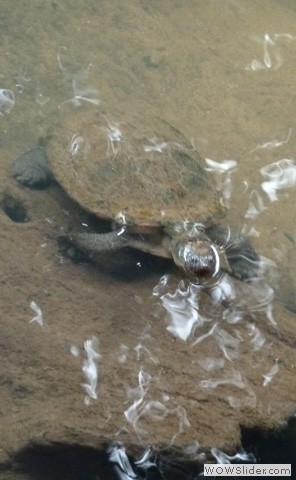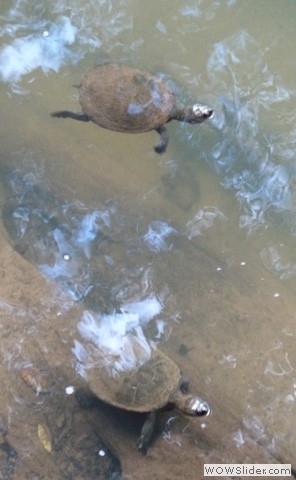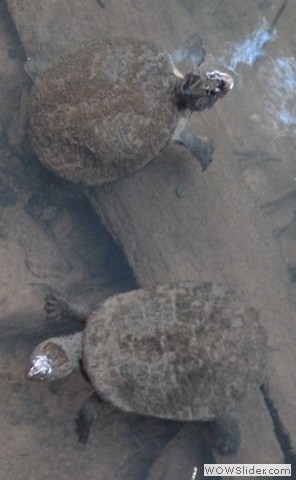Saw-shelled Turtle
Elseya latisternum
Other Names
- Serrated Snapping Turtle
When on the lookout for Platypuses, turtles are easy to see congregating in fair numbers in Broken River.
Description:
Oval shell that is broadest behind the centre and serrated on rim at tail end. The serrations are less obvious on adults. Top of the head covered by horny plates and a projected snout. The feet are webbed and clawed. Known colours vary between black, olive green, and chestnut brown (Ryan and Burwell 2000, 198).
They can stay underwater for prolonged periods by obtaining oxygen from the water through their skin using their cloaca and buccopharyngeal cavity (Ryan and Burwell 2000, 199). Thus, it is easiest to see turtles in shallows alongside the creek bank. Generally they have a passive nature, but in defence they can offer a fierce bite, and emit a strong smell.
Habitat:
Endemic to Australia, they live in creeks, swamps, wetlands, and billabongs. Specimens have been sighted along the east coast from Richmond New South Wales, to Cape York Queensland, and west to Arnhem Land Northern Territory.
Diet:
Feeds on aquatic insects, fish, crustaceans, molluscs, fruits, tadpoles, and frogs. Saw-shelled turtles are one of few native animals that successfully prey on Cane Toad (Ryan and Burwell 2000, 198).
Gender:
The female has a larger shell of 28 centimetres compared to a male shell of 18 centimetres. Breeding season is from Sept to Jan. The female can lay up to fifty eggs between three to four clutches. The eggs are 20-35 millimetres in diameter.



 1
1 2
2 3
3


 1
1 2
2 3
3